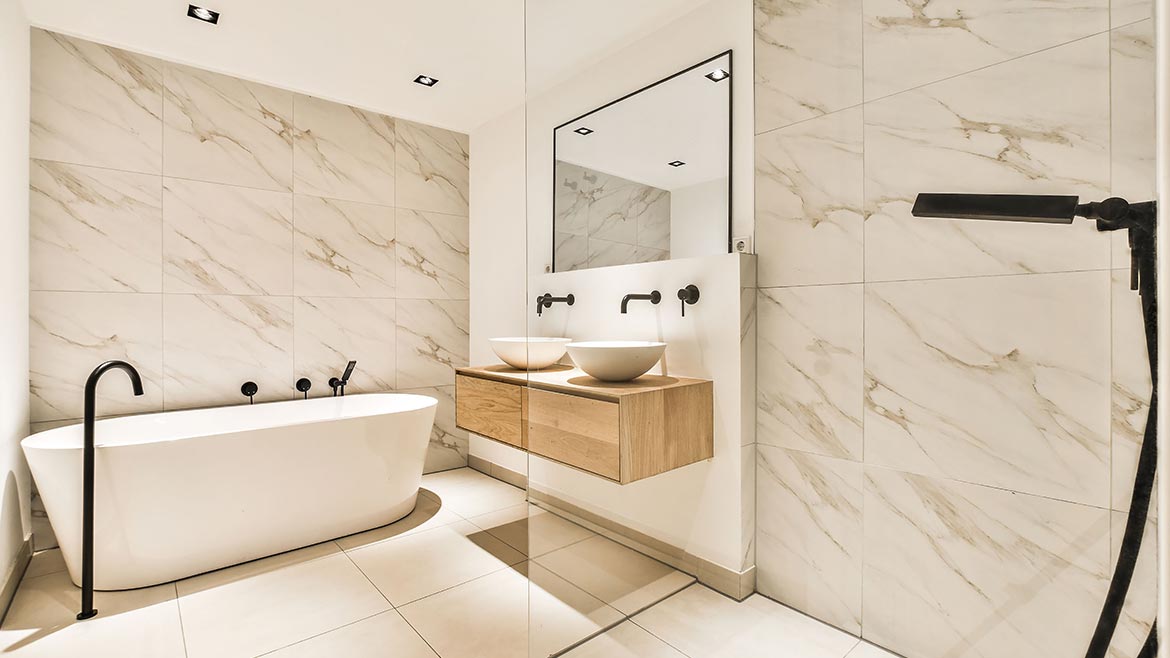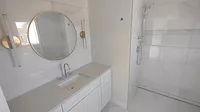Navigating Modern Substrate Challenges in the Age of Large Format Tiles

Our approach to substrate preparation must evolve in tandem with the changing demands of tile installations.
Photo: Sidorov_Ruslan/Shutterstock.
The landscape of tile installations has seen significant shifts over the past few years. A major contributor to this change has been the rising popularity of large format tiles, now often exceeding 15 inches in any direction. Their aesthetic appeal and vast surface coverage make them a favored choice. But this trend has also ushered in stricter demands on substrate preparation and flatness. The Tile Council of North America (TCNA) and the National Tile Contractors Association (NTCA) emphasize that the substrate for these expansive tiles must deviate no more than 1/8” over a span of 10 feet. Such precision is no longer just an ideal; it's a requirement.
Taking it a step further, the NTCA discourages the traditional practice of using tile adhesive to adjust for height differences, a testament to how integral flatness has become. Now, imagine the challenges introduced by tile panels that span 10 feet by 10 feet. The substrate preparation for such tiles isn't just about laying a base; it's about ensuring a flawless canvas for a masterpiece.
Yet, as I've observed in my interactions with tile installers and through sourcing products for them, the concerns aren't limited to the size of the tiles. Modern porcelain tiles, unlike the older porous ceramics, are practically impermeable. In a bygone era, wider grout joints and porous tiles allowed underlying moisture to escape. But the new-age combination of tight 1/16” grout joints and impervious porcelains introduces an unanticipated complication: trapped moisture. On a slab resting on the ground, this scenario can result in pressure buildup, strong enough to damage an entire tile installation. This is a contemporary challenge, reshaping our approach to substrate preparation.

As we embrace the allure of large format tiles and the nuances of modern porcelains, substrate preparation's significance can't be overstated. It's a journey of precision, understanding and adaptation, ensuring that our tile installations are not just visually stunning but also technically sound. Photo: Procreators/Shutterstock.
Moisture mitigation, in this context, can't be an afterthought. It's a glaring reality that moisture-induced issues account for a significant chunk of flooring failures, sometimes with costs skyrocketing to billions. Addressing moisture means understanding its interaction with modern tiles and substrates to make sure we provide an installation that isn't just beautiful on the surface but also enduring at its core.
Our approach to substrate preparation must evolve in tandem with the changing demands of tile installations. This starts with an in-depth assessment of the substrate. It’s imperative that the substrate not only be flat but also have the necessary underlayments and levelers. Self-leveling underlayments, for instance, have revolutionized the way we approach substrate prep, allowing for the correction of surface imperfections before tile installation. These products create a smooth, durable surface that is resilient against moisture and even inhibits microbial growth.
Yet, the benefits of self-leveling products go beyond just offering a flat surface. The fast-curing nature of these products means less downtime for installers. And as project timelines compress and onsite access becomes more controlled, such time-efficient solutions become indispensable.
Our industry's evolution is undeniable. It reflects the products we use, the designs we create and the challenges we navigate. As we embrace the allure of large format tiles and the nuances of modern porcelains, substrate preparation's significance can't be overstated. It's a journey of precision, understanding and adaptation, ensuring that our tile installations are not just visually stunning but also technically sound.
Looking for a reprint of this article?
From high-res PDFs to custom plaques, order your copy today!


